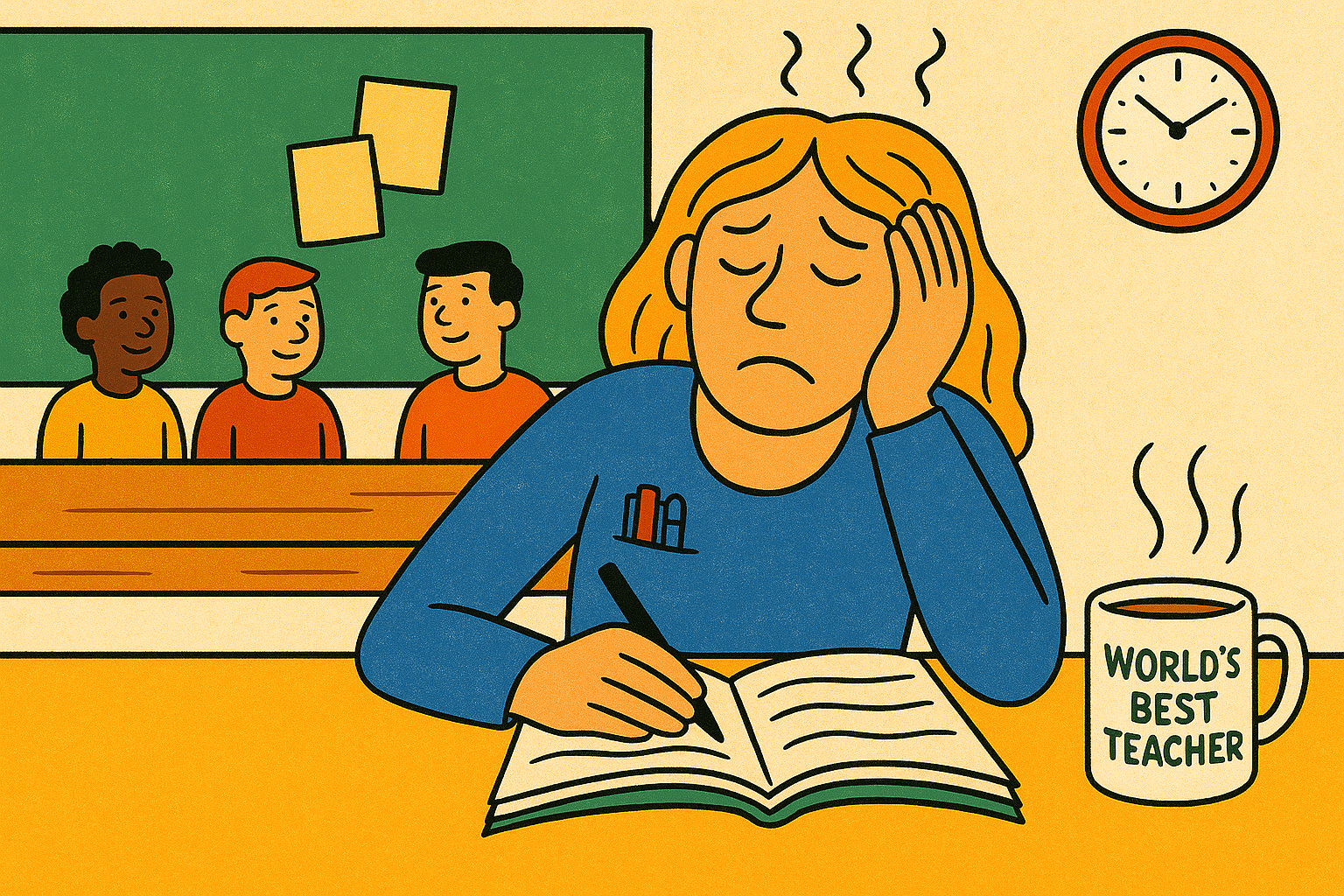Feel-Good Wellness vs Real Mental Health Support: Know the Difference
It’s late May. The finish line of the European school year is visible. Yet instead of excitement, many teachers feel something else entirely: exhaustion. Burnout whispers grow louder, and academic research clearly validates this reality. Burnout is a documented psychological state defined by emotional exhaustion, depersonalisation, and reduced personal accomplishment (Maslach & Leiter, 2016).
Superficial Responses vs. Systemic Solutions
Our instinctive response often involves a surge in wellness initiatives such as mindfulness apps, snacks, occasional yoga sessions, and motivational posters (and yes, in a former life I am guilty of all of these). While these efforts come from good intentions, research indicates they rarely resolve burnout effectively because they do not tackle deeper, systemic issues including overwhelming workloads, lack of autonomy, and insufficient emotional support (Leiter & Maslach, 2005).
Genuine Mental Health Support: Psychological Safety
Let’s be clear: feel-good wellness is better than nothing, but it’s not enough. Genuine mental health support is deeper and more structured. Research highlights the importance of psychological safety, defined as creating workplace or school environments where individuals feel comfortable openly sharing struggles without fear of negative repercussions (Edmondson, 2019). This safety does not happen by accident; it requires intentional, consistent effort.
Practical Skills and Protocols
Practically, this means equipping teams with clear, evidence-based skills such as:
recognising burnout symptoms early;
confidently initiating empathetic conversations, and;
having structured guidelines for responding effectively.
For instance, brief emotional check-ins at staff meetings are an evidence-based approach shown to significantly enhance wellbeing and openness within teams (Reeve et al., 2019). Clear protocols for responding to distress signals help establish a proactive, responsive culture (Leiter & Maslach, 2016).
Reality Check: Beyond "Pushing Through"
As a mental health first aid trainer and former school leader, I recognise the reality is often starkly different. Many teams still believe the solution to burnout involves simply "pushing through." However, research clearly indicates spontaneous resolution of burnout rarely happens without structured interventions (Schaufeli et al., 2009). Effective management of burnout takes deliberate effort and practical skills rather than temporary relief.
Taking Action: Structured, Evidence-Based Steps
Reflect honestly on your organisation’s approach. Are you genuinely addressing burnout, or applying superficial solutions? Consider structured, research-backed actions such as:
Training leaders and staff in mental health first aid.
Developing clear burnout response protocols.
Implementing regular, structured emotional check-ins during staff meetings.
These practical steps are supported by evidence as significantly more effective than surface-level gestures (Kitchener & Jorm, 2008).
Final Reflections
As this school year closes, what intentional step can your team take to transform feel-good wellness into genuinely supportive mental health strategies?
Burnout is not solved by snacks and slogans. It is managed through evidence-based skills, structured conversations, and intentional, compassionate actions.
It is time we all recognised the difference.
References
Edmondson, A. C. (2019). The fearless organisation: Creating psychological safety in the workplace for learning, innovation, and growth. Wiley.
Kitchener, B. A., & Jorm, A. F. (2008). Mental health first aid: An international programme for early intervention. Early Intervention in Psychiatry, 2(1), 55–61. 10.1111/j.1751-7893.2007.00056.x
Leiter, M. P., & Maslach, C. (2005). Banishing burnout: Six strategies for improving your relationship with work. Jossey-Bass.
Maslach, C., & Leiter, M. P. (2016). Understanding the burnout experience: Recent research and its implications for psychiatry. World Psychiatry, 15(2), 103–111. 10.1002/wps.20311
Reeve, J., Cheon, S. H., & Jang, H. R. (2019). Supporting student motivation through emotional engagement strategies. Journal of Educational Psychology, 111(7), 1321–1332. 10.1037/a0012841
Schaufeli, W. B., Leiter, M. P., & Maslach, C. (2009). Burnout: 35 years of research and practice. Career Development International, 14(3), 204–220.
West, C. P., Dyrbye, L. N., Erwin, P. J., & Shanafelt, T. D. (2016). Interventions to prevent and reduce physician burnout: A systematic review and meta-analysis. The Lancet, 388(10057), 2272–2281. https://www.thelancet.com/journals/lancet/article/PIIS0140-6736(16)31279-X/abstract

